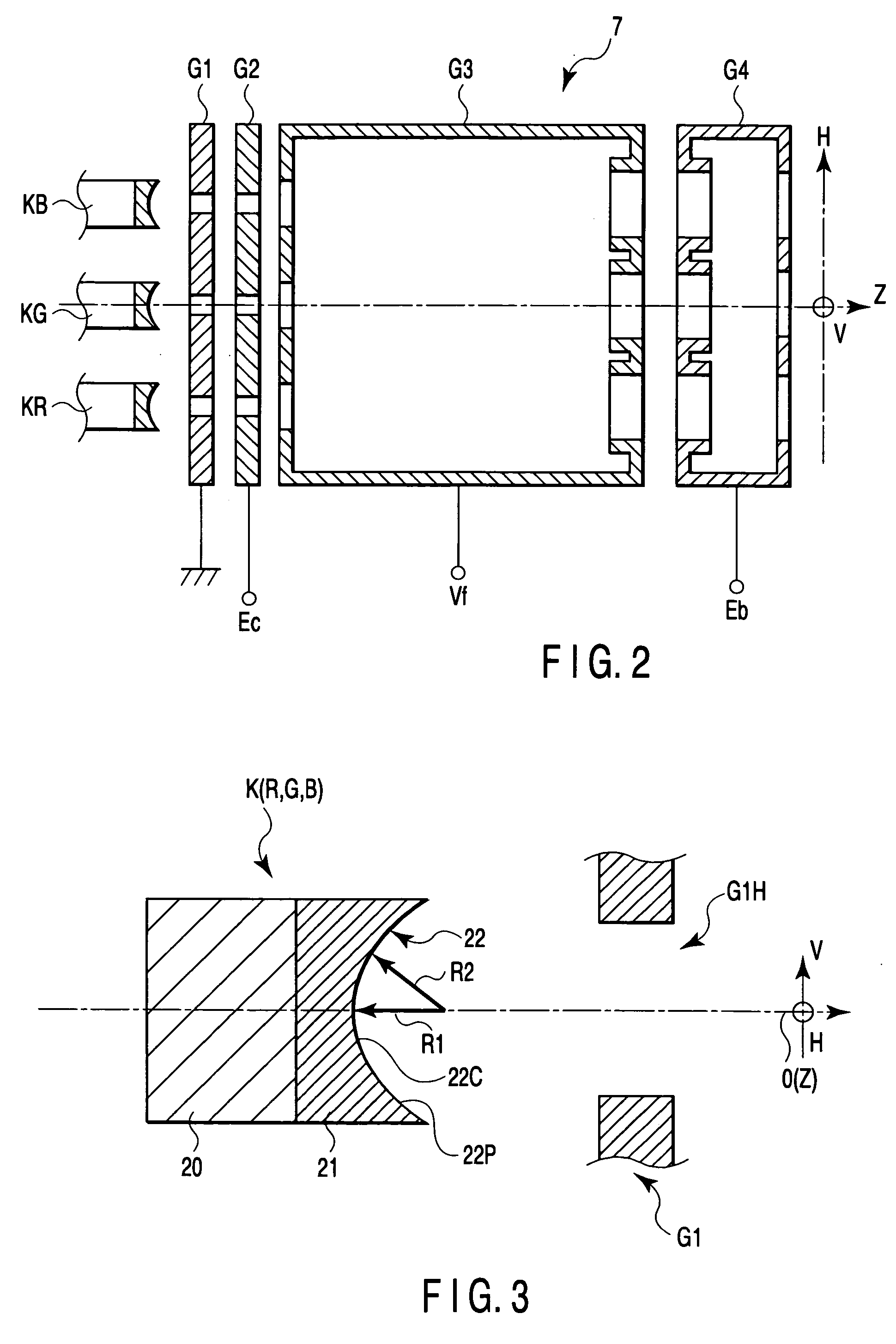Cathode-ray tube
a cathode-ray tube and tube body technology, applied in the field of cathode-ray tubes, can solve the problems of varying electron emission regions, affecting the display quality, and affecting the display quality, and achieve the effect of high display quality
- Summary
- Abstract
- Description
- Claims
- Application Information
AI Technical Summary
Benefits of technology
Problems solved by technology
Method used
Image
Examples
Embodiment Construction
[0039] A cathode-ray tube according to an embodiment of the present invention will now be described with reference to the accompanying drawings.
[0040] As is shown in FIG. 1, a cathode-ray tube apparatus, that is, a self-convergence type in-line color cathode-ray tube apparatus, has a vacuum envelope 9. The vacuum envelope 9 includes a panel 1 and a funnel 2 integrally coupled to the panel 1. A phosphor screen 3 is disposed on an inside surface of the panel 1. The phosphor screen 3 has three-color striped or dot-shaped phosphor layers, which emit blue, green and red light. A shadow mask 4 is disposed to face the phosphor screen 3. The shadow mask 4 has many apertures in its inside part.
[0041] An in-line electron gun assembly 7 is disposed within a cylindrical neck 5, which corresponds to a small-diameter portion of the funnel 2. The electron gun assembly 7 emits three in-line electron beams 6B, 6G and 6R (i.e. a center beam 6G and side beams 6B and 6R) which are arranged in line an...
PUM
 Login to View More
Login to View More Abstract
Description
Claims
Application Information
 Login to View More
Login to View More - R&D
- Intellectual Property
- Life Sciences
- Materials
- Tech Scout
- Unparalleled Data Quality
- Higher Quality Content
- 60% Fewer Hallucinations
Browse by: Latest US Patents, China's latest patents, Technical Efficacy Thesaurus, Application Domain, Technology Topic, Popular Technical Reports.
© 2025 PatSnap. All rights reserved.Legal|Privacy policy|Modern Slavery Act Transparency Statement|Sitemap|About US| Contact US: help@patsnap.com



